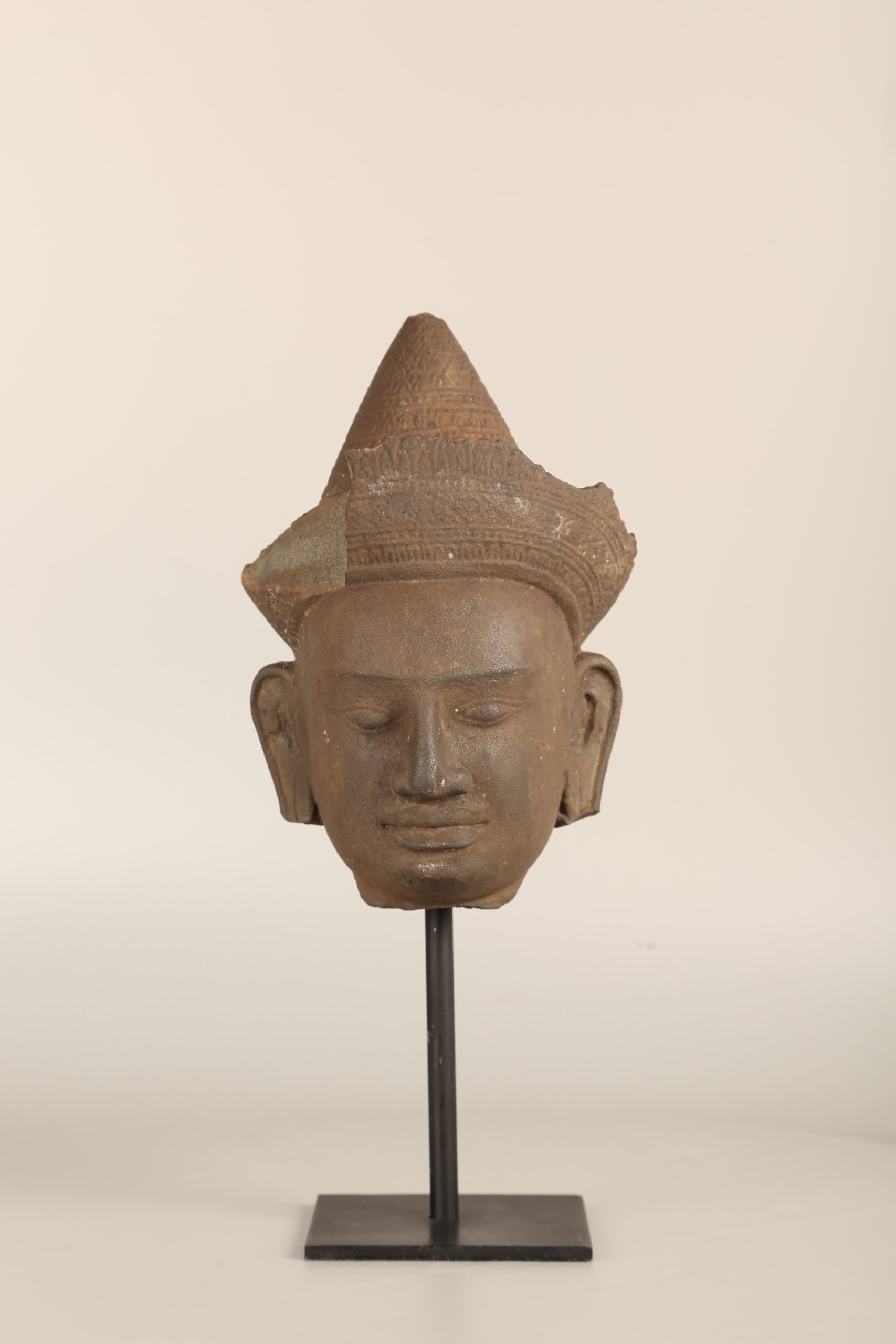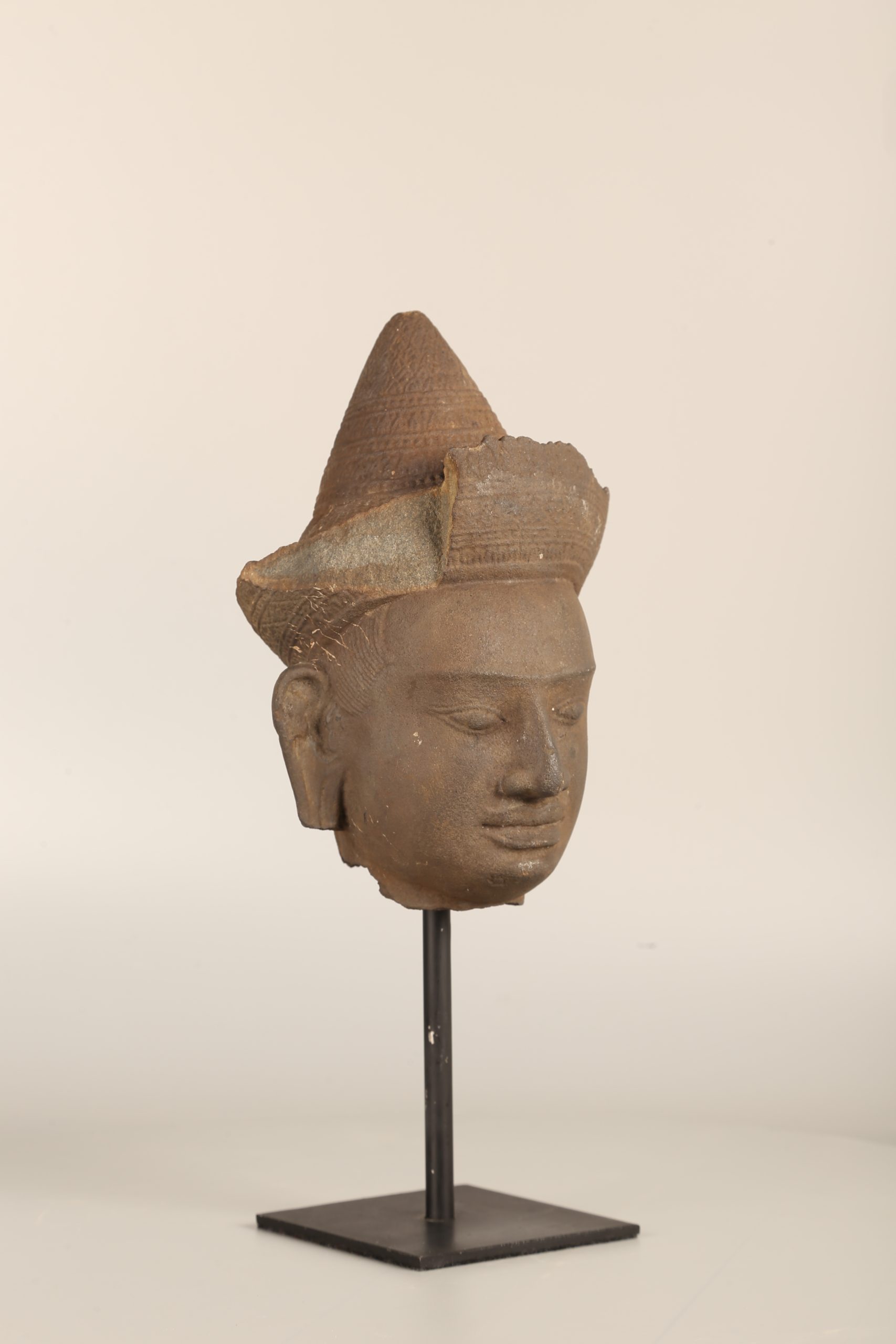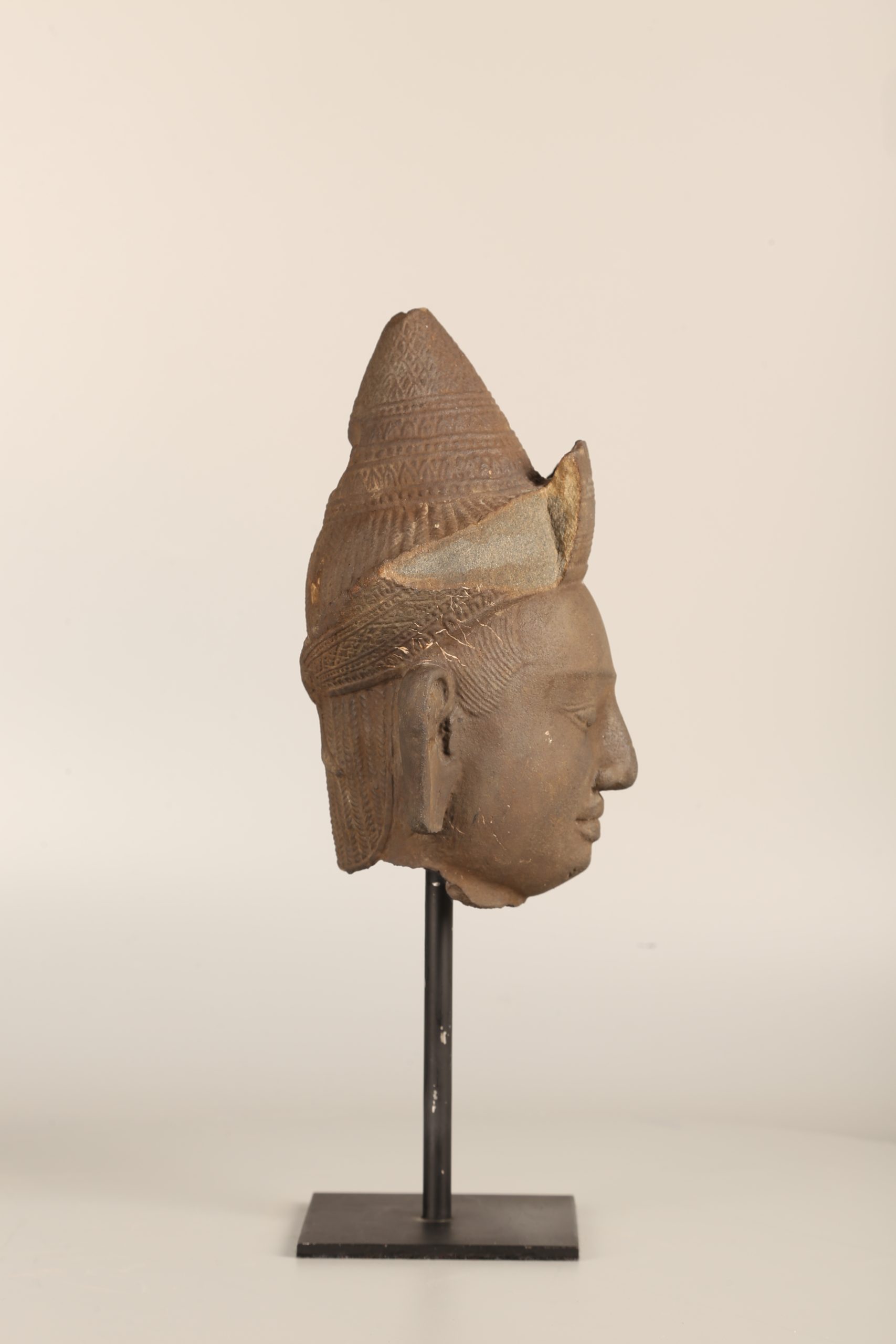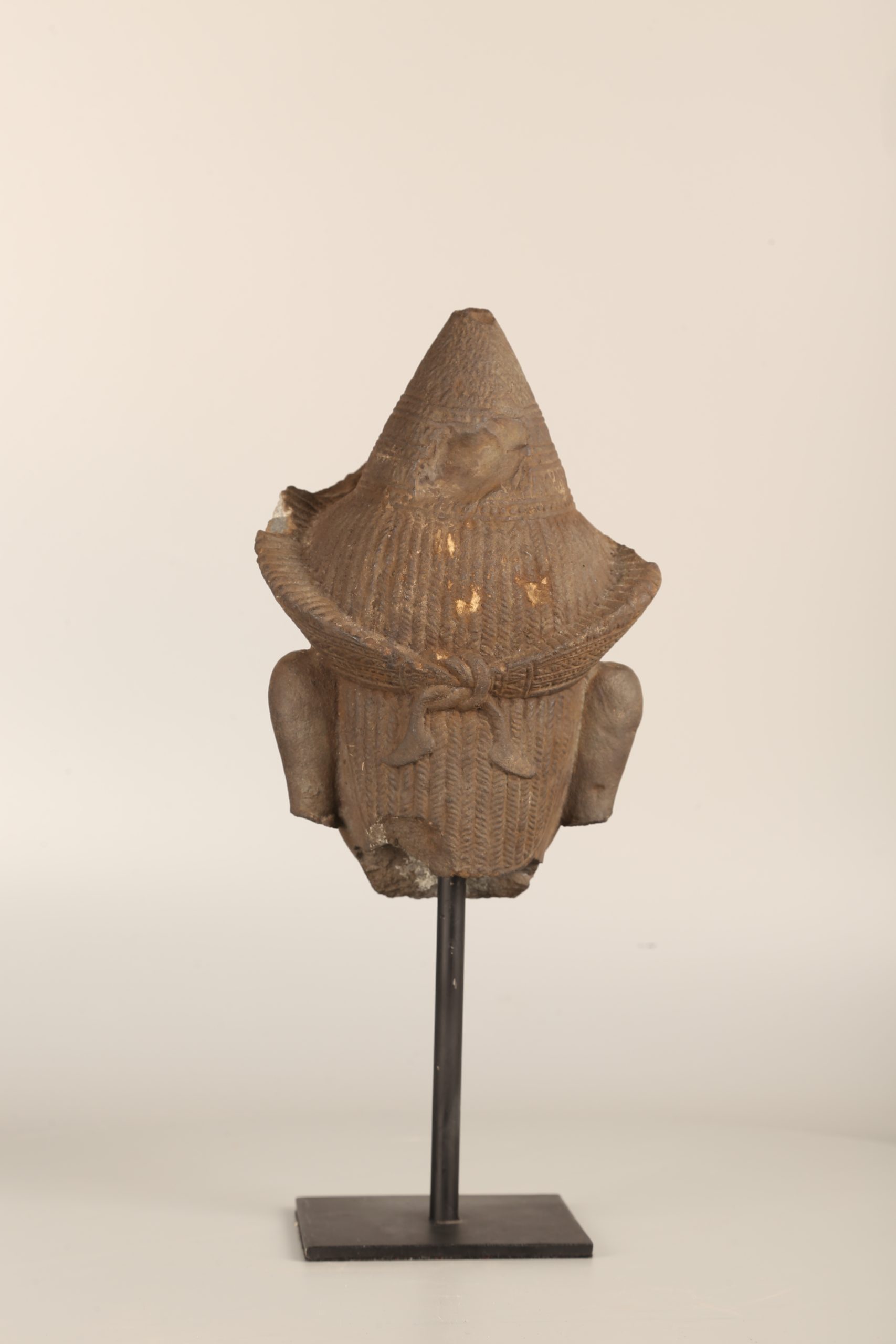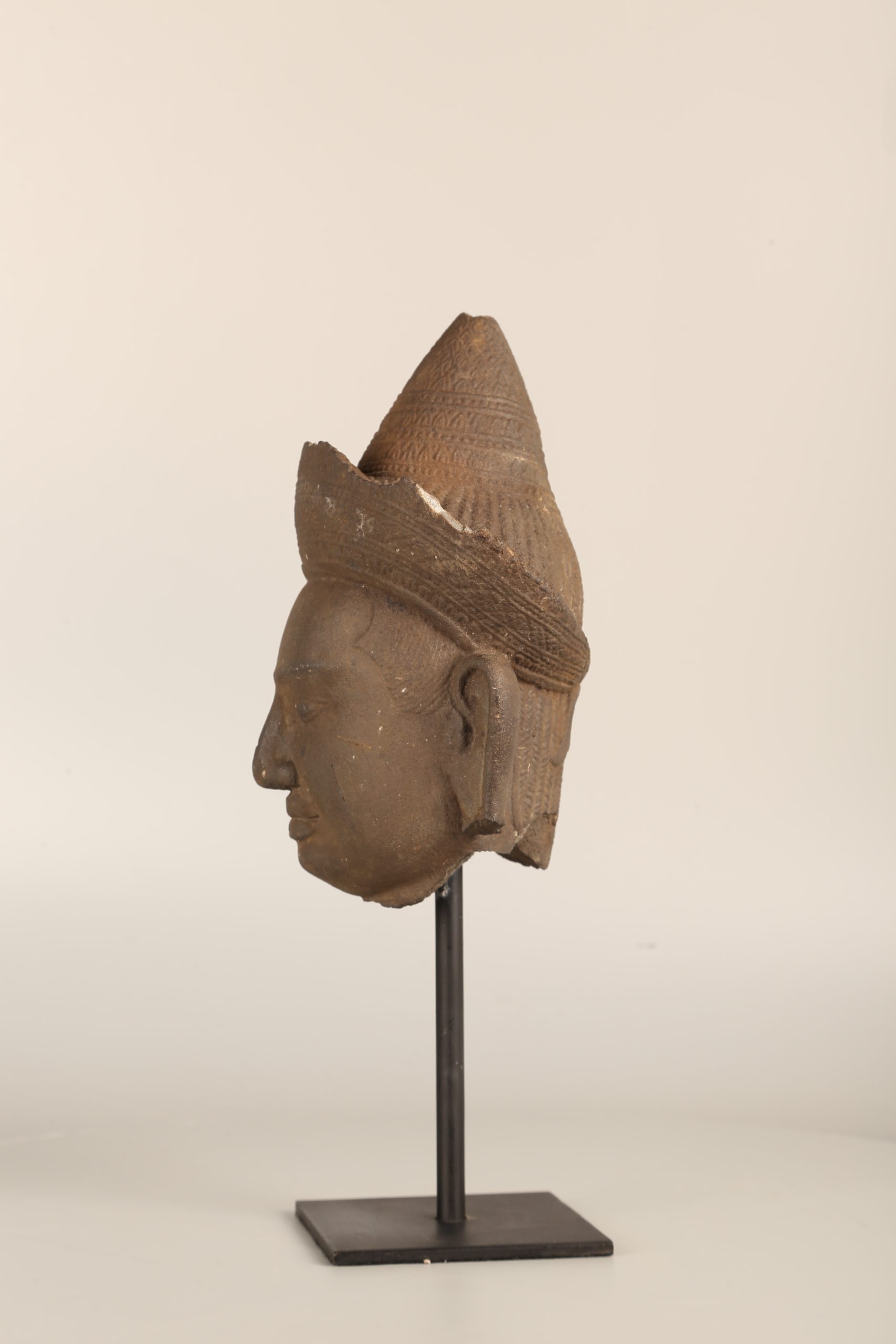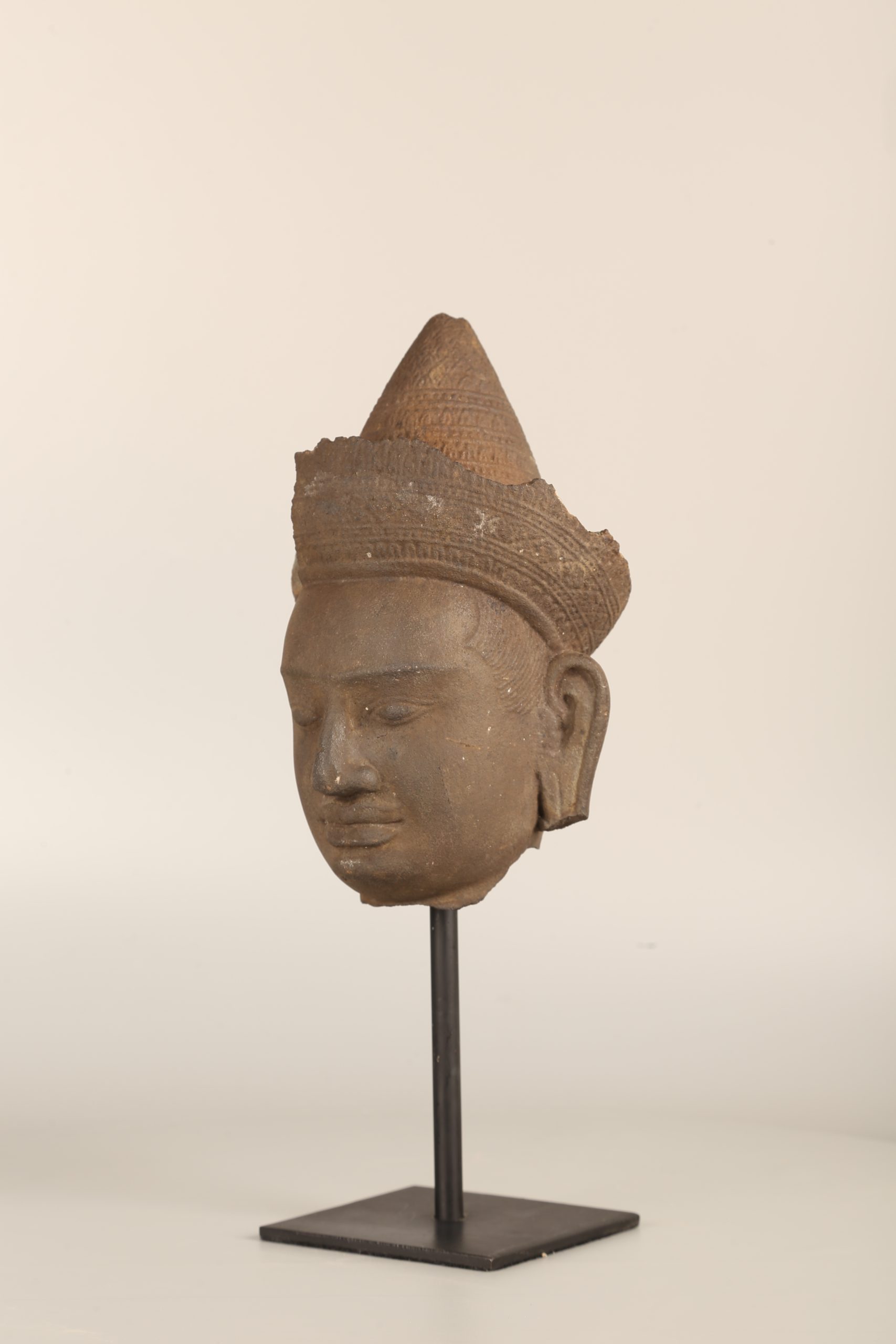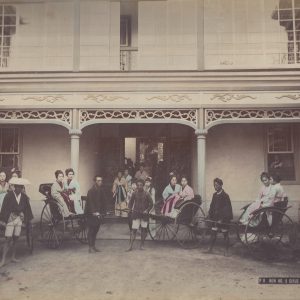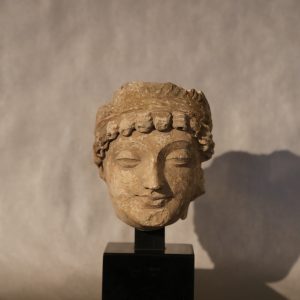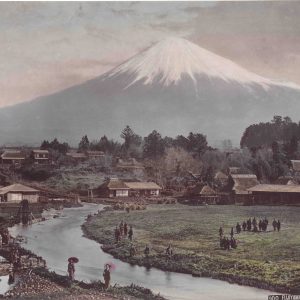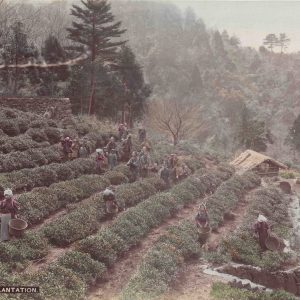Head of Visnu with conical tiara
Sandstone
Cambodia
11th-12th centuries, Angkorian period
Height: 23 cm
Description
A refined image of the god Visnu
This head of Visnu, sculpted in the round, is dated to the 11th-12th centuries. The god is wearing the conical Mukuta tiara, itself adorned with a finely worked diadem.An expression of serenity emanates from this face with finely sculpted features. The god is presented to the eye in a frontal attitude, characteristic of Khmer art. The geometric proportionsare characteristic of Khmer art, where stylisation is omnipresent. His eyes are delicately incised, as well as his hemmed mouth, showing a slight smile. The benevolent air of the god helped to put the faithful at ease within the sanctuary. His rich conical tiara, adorned with a diadem, conveys the great attention to detail and the mastery of carving by Angkorian artists. Carved from sandstone, this piece has been cut and polished in a refined and detailed manner, conveying the evocative power of the imageto the viewer.
The Visnuite cult in Cambodia
Influenced by India, the Khmers adopted not only their main religions -Buddhism and Hinduism -but also other cultural aspects, notably the Sanskrit script. Thus, the cult of Visnu is also spreading in Cambodia. The most revealing example of the importance of his cult is the construction, in the first half of the 12th century, of the temple of Angkor Wat, the jewel of Angkorian architecture. It is a temple-mountain, a typically Khmer architecture, dedicatedto the god Visnu. Taken from the Indian subcontinent, the religious iconography allows us to recognise Visnu here by his tiara, which is nevertheless treated in a style specific to the Khmer tradition. If the image of Visnu is taken from the Indian subcontinent, it is also the main mythological texts of the cult of the god that are found in Cambodia, such as the Mahabharata.
The apogee of Khmer art
This work is part of the Angkorian period (802-1431), which is considered the apogee of Khmer art. This period began under the reign of Jayavarman II, who established his capital at Angkor, in the central plain of the country. Located next to the Great Lake, the site benefits from numerous natural resources, notably favoured by the phenomenon of the inversion of the Mekong River, which drains the entire territory. During this long period, the nerve centre of the capital gradually shifted, and numerous temples were built, giving rise to an unparalleled artistic emulation. Under Thai pressure, the capital of Angkor was abandoned in 1431, bringing to an end an era considered to be the most brilliant artistic period in Cambodia.
Provenance : From an old French collection (by reputee).

